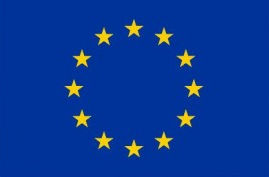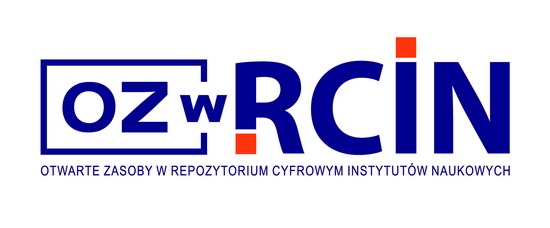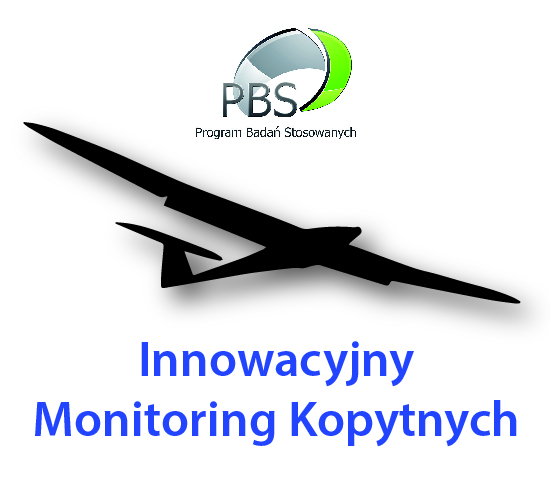Pracownia Ekologii i Bioróżnorodności
|
||
Open VPN
Wolsan, Mieczysław (prof. dr hab.)
Main research interests
Phylogenetic systematics, evolutionary history, and ecomorphology of carnivoran mammals, with emphasis on musteloids (mustelids, procyonids, ailurids, and mephitids).
Theory and practice of systematic biology.
Evolutionary, developmental, and taxonomic implications of intraspecific dental polymorphism in carnivorans and other mammals.
Zooarcheological inference from mammalian remains.
Ongoing research project
Selected publications
Ten adres pocztowy jest chroniony przed spamowaniem. Aby go zobaczyć, konieczne jest włączenie w przeglądarce obsługi JavaScript.
In press
2015
178. Wolsan M., Suzuki S., Asahara M., Motokawa, M. 2015. Tooth size variation in pinniped dentitions. PLOS One 10 (8, e0137100): 1–28.
2014
177. Li B., Wolsan M., Wu D., Zhang W., Xu Y., Zeng Z. 2014. Mitochondrial genomes reveal the pattern and timing of marten (Martes), wolverine (Gulo), and fisher (Pekania) diversification. Molecular Phylogenetics and Evolution 80: 156–164.
176. Ivanoff D. V., Wolsan M., Marciszak A. 2014. Brainy stuff of long-gone dogs: a reappraisal of the supposedCanis endocranial cast from the Pliocene of Poland. Naturwissenschaften 101 (8): 645–651.
2013
167. Wolsan M. 2013. Family Mustelidae: weasels, polecats, otters, Ratel and allies. In: Kingdon J., Hoffmann, M. (eds.), Mammals of Africa, volume 5: carnivores, pangolins, equids and rhinoceroses, pp. 82–84. Bloomsbury Publishing, London.
166. Wolsan M., Sotnikova M. 2013. Systematics, evolution, and biogeography of the Pliocene stem meline badger Ferinestrix (Carnivora: Mustelidae). Zoological Journal of the Linnean Society 167 (1): 208–226.
2012
163. Sato J. J., Wolsan M. 2012. Evolutionary origin of the red panda (Ailurus fulgens) [in Japanese]. Honyurui Kagaku 52 (1): 23–40.
162. Sato J. J., Wolsan M. 2012. Loss or major reduction of umami taste sensation in pinnipeds. Naturwissenschaften 99 (8): 655-659.
161. Sato J. J., Wolsan M., Prevosti F. J., D'Elía G., Begg C., Begg K., Hosoda T., Campbell K. L., Suzuki H. 2012. Evolutionary and biogeographic history of weasel-like carnivorans (Musteloidea). Molecular Phylogenetics and Evolution 63 (3): 745-757.
2010
155. Wolsan M., Sato J. J. 2010. Effects of data incompleteness on the relative performance of parsimony and Bayesian approaches in a supermatrix phylogenetic reconstruction of Mustelidae and Procyonidae (Carnivora). Cladistics 26 (2): 168-194.
2009
153. Sato J. J., Wolsan M., Minami S., Hosoda T., Sinaga M. H., Hiyama K., Yamaguchi Y., Suzuki H. 2009. Deciphering and dating the red panda’s ancestry and early adaptive radiation of Musteloidea. Molecular Phylogenetics and Evolution 53 (3): 907–922.
2008
147. Wolsan M. 2008. Ewa Barycka (1979–2008). Acta Palaeontologica Polonica 53 (2): 284.
2007
146. Wolsan M. 2007. Naming species in phylogenetic nomenclature. Systematic Biology 56 (6): 1011–1021.
142. Wolsan M. 2007. Impracticality and instability of species names under Lanham’s method. Taxon 56 (2): 292–294.
2006
139. Sato J. J., Wolsan M., Suzuki H., Hosoda T., Yamaguchi Y., Hiyama K., Kobayashi M., Minami S. 2006. Evidence from nuclear DNA sequences sheds light on the phylogenetic relationships of Pinnipedia: single origin with affinity to Musteloidea. Zoological Science 23 (2): 125–146.
2004
122. Sato J. J., Hosoda T., Wolsan M., Suzuki H. 2004. Molecular phylogeny of arctoids (Mammalia: Carnivora) with emphasis on phylogenetic and taxonomic positions of the ferret-badgers and skunks. Zoological Science 21 (1): 111–118.
2003
115. Lipecki G., Wolsan M. 2003. Carnivorans (Carnivora). In: Valde-Nowak P., Nadachowski A., Madeyska T. (eds.), Obłazowa Cave: human activity, stratigraphy and palaeoenvironment, pp. 125–129. Institute of Archaeology and Ethnology, Polish Academy of Sciences, Cracow.
108. Sato J. J., Hosoda T., Wolsan M., Tsuchiya K., Yamamoto Y., Suzuki H. 2003. Phylogenetic relationships and divergence times among mustelids (Mammalia: Carnivora) based on nucleotide sequences of the nuclear interphotoreceptor retinoid binding protein and mitochondrial cytochrome bgenes. Zoological Science 20 (2): 243–264.
2002
107. Lee M., Wolsan M. 2002. Integration, individuality and species concepts. Biology and Philosophy 17 (5): 651–660.
99. Maryańska T., Osmólska H., Wolsan M. 2002. Avialan status for Oviraptorosauria. Acta Palaeontologica Polonica 47 (1): 97–116.
2001
97. Wolsan M. 2001. Remains of Meles hollitzeri (Carnivora, Mustelidae) from the Lower Pleistocene site of Untermaßfeld. Monographien des Römisch-Germanischen Zentralmuseums Mainz 40 (2): 659–671.
93. Wolsan M., Okarma H. 2001. Lynx lynx (Linné, 1758) . In: Głowaciński Z. (ed.), Polska czerwona księga zwierząt: kręgowce [Polish red data book of animals: vertebrates], pp. 96–97. Państwowe Wydawnictwo Rolnicze i Leśne, Warsaw.
92. Wolsan M., Okarma H. 2001. Felis silvestris Schreber, 1775. In: Głowaciński Z. (ed.), Polska czerwona księga zwierząt: kręgowce [Polish red data book of animals: vertebrates], pp. 94–95. Państwowe Wydawnictwo Rolnicze i Leśne, Warsaw.
2000
90. Cyrek K., Nadachowski A., Madeyska T., Bocheński Z., Tomek T., Wojtal P., Miękina B., Lipecki G., Garapich A., Rzebik-Kowalska B., Stworzewicz E., Wolsan M., Godawa J., Kościów R., Fostowicz-Frelik Ł., Szyndlar Z. 2000. Excavation in the Deszczowa Cave (Kroczyckie Rocks, Częstochowa Upland, Central Poland). Folia Quaternaria 71: 5–84.
89. Mödden C., Wolsan M. 2000. External brain morphology of the late Oligocene musteloid carnivoranBavarictis gaimersheimensis. Acta Palaeontologica Polonica 45 (3): 301–310.
1999
87. Nadachowski A., Wolsan M. 1999. Szczątki zwierzęce z jamy kultury ceramiki wstęgowej rytej w Świerszczowie Kolonii, stan. 28, pow. Hrubieszów [Animal remains from a pit of the Linear Pottery culture at Świerszczów Kolonia, site 28, district Hrubieszów]. Archeologia Polski Środkowowschodniej 4: 238–239.
86. Wolsan M. 1999. Oldest mephitine cranium and its implications for the origin of skunks. Acta Palaeontologica Polonica 44 (2): 223–230.
1998
83. Bieniek M., Wolsan M., Okarma H. 1998. Historical biogeography of the lynx in Poland. Acta Zoologica Cracoviensia 41 (1): 143–167.
78. Wolsan M., Hutterer R. 1998. A list of the living species of shrews. In: Wójcik J. M., Wolsan M. (eds.), Evolution of shrews, pp. 425–448. Mammal Research Institute, Polish Academy of Sciences, Białowieża.
76. Wolsan M., Nadachowski A. 1998. Szczątki zwierzęce ze stanowisk grupy masłomęckiej w Gródku i Masłomęczu koło Hrubieszowa (młodszy okres wpływów rzymskich) [Animal remains from sites of the Masłomęcz group at Gródek and Masłomęcz near Hrubieszów (Late Roman period, eastern Poland)]. Studia Gothica 2 (1997): 127–132.
1997
75. Aguilar J.-P., Agustí J., Alexeeva N., Antoine P.-O., Antunes M. T., Archer M., Argenti P., Aubry M.-P., Azanza B., Barbera Bota X., Benammi M., Bendukidze O., Bernor R., Bessedik M., Blondel C., Boeuf O., Bolliger T., de Bonis L., Brugal J.-P., de Bruijn H., Brunet M., Cabrera Perez L., Cappetta H., Casanovas Cladellas L., Clauzon G., Comte B., Crégut E., Crochet J.-Y., Cuesta M. A., Daams R., Daxner-Höck G., Denys C., Ducrocq S., Duprat M., Duranthon F., Engesser B., Erbajeva M., Escarguel G., Fahlbusch V., Feist M., Fejfar O., Flynn L., Fortelius M., Freudenthal M., Garcia G., Gheerbrant E., Godinot M., Godthelp H., Hand S., Hartenberger J.-L., Heissig K., Heizmann E., Hellmund M., Hugueney M., Jaeger J.-J., Kälin D., Kalthoff D., Kempf O., Kordikova E., Kotsakis T., Koufos G., Kowalski K., Kuznetsova T., Laudet F., Lavocat R., Legendre S., Llenas M., López Martínez N., van der Made J., Mahboubi M., Marandat B., Martin Suarez E., Martinez J.-N., Matter A., Mein P., van der Meulen A., Michaux J., Mödden C., Montuire S., Mörs T., Mourer-Chauviré C., Pelaez Campomanes P., Radulescu C., Remy J. A., Rey J., Rössner G., Russell D. E., Rzebik-Kowalska B., Santafé J., Schmidt-Kittler N., Sen S., Sénégas F., Sigé B., Smith T., Spassov N., Sudre J., Sylvestrou I., Terzea E., Thaler L., Torre D., Vianey-Liaud M., Vislobokova I., Welcomme J.-L., Werdelin L., Wessels W., Wolsan M. 1997. Syntheses and correlation tables. In: Aguilar J.-P., Legendre S., Michaux J. (eds.), Actes du Congrès BiochroM’97, Montpellier, 14–17 avril: biochronologie mammalienne du Cénozoïque en Europe et domaines reliés. Mémoires et Travaux de l’Institut de Montpellier de l’École Pratique des Hautes Études 21: 769–805.
69. Wolsan M., Morlo M. 1997. The status of “Plesictis” croizeti, “Plesictis” gracilis and “Lutra” minor: synonyms of the early Miocene viverrid Herpestides antiquus (Mammalia, Carnivora). Bulletin of The Natural History Museum, Geology Series 53 (1): 1–9.
1996
67. Wolsan M. 1996. Filogeneza a kladystyka [Phylogeny and cladistics]. Kosmos (Warszawa) 45 (4): 763–768.
65. Wolsan M., Semenov Y. A. 1996. A revision of the late Miocene mustelid carnivoran Eomellivora. Acta Zoologica Cracoviensia 39 (1): 593–604.
64. Wolsan M., Lange-Badré B. 1996. An arctomorph carnivoran skull from the Phosphorites du Quercy and the origin of procyonids. Acta Palaeontologica Polonica 41 (3): 277–298.
1995
60. Cirot E., Wolsan M. 1995. Late Oligocene amphictids (Mammalia: Carnivora) from La Milloque, Aquitaine Basin, France. Geobios 28 (6): 757–767.
1993
56. Mödden C., Wolsan M. 1993. Potamotherium valletoni (Mammalia: Carnivora) aus dem Untermiozän von Wiesbaden-Amöneburg im Mainzer Becken [Potamotherium valletoni (Mammalia: Carnivora) from the Lower Miocene of Wiesbaden-Amöneburg in the Mainz Basin]. Mainzer Naturwissenschaftliches Archiv 31: 215–221.
55. Nadachowski A., Harrison D. L., Szyndlar Z., Tomek T., Wolsan M. 1993. Late Pleistocene vertebrate fauna from Obłazowa 2 (Carpathians, Poland): palaeoecological reconstruction. Acta Zoologica Cracoviensia 36 (2): 281–290.
54. Wolsan M. 1993. Phylogeny and classification of early European Mustelida (Mammalia: Carnivora). Acta Theriologica 38 (4): 345–384.
53. Wolsan M. 1993. Definitions, diagnoses, and classification of higher-level taxa of the Mustelida (Carnivora: Arctoidea). Zeitschrift für Säugetierkunde 58 (Special Issue): 79–80.
52. Wolsan M. 1993. Évolution des Carnivores quaternaires en Europe centrale dans leur contexte stratigraphique et paléoclimatique [Evolution of the Quaternary carnivores in Central Europe: a stratigraphic and palaeoclimatic reference]. Anthropologie 97 (2/3): 203–222.
51. Wolsan M. 1993. Mustela eversmanni Lesson, 1827—Steppeniltis [Mustela eversmanni Lesson, 1827—Steppe polecat]. In: Stubbe M., Krapp, F. (eds.), Handbuch der Säugetiere Europas, volume 5, part 2, pp. 770–816. AULA-Verlag, Wiesbaden.
50. Wolsan M. 1993. Mustela putorius Linnaeus, 1758—Waldiltis, Europäischer Iltis, Iltis [Mustela putorius Linnaeus, 1758—European polecat]. In: Stubbe M., Krapp, F. (eds.), Handbuch der Säugetiere Europas, volume 5, part 2, pp. 699–769. AULA-Verlag, Wiesbaden.
1992
49. Wolsan M., Bieniek M., Buchalczyk T. 1992. The history of distributional and numerical changes of the wolf Canis lupus L. in Poland. In: Bobek B., Perzanowski K., Regelin W. L. (eds.), Global trends in wildlife management, volume 2, pp. 375–380. Świat Press, Cracow.
48. Bieniek M., Wolsan M. 1992. The history of distributional and numerical changes of the lynx Lynx lynx (L.) in Poland. In: Bobek B., Perzanowski K., Regelin W. L. (eds.), Global trends in wildlife management, volume 2, pp. 335–340. Świat Press, Cracow.
46. Alexandrowicz S. W., Drobniewicz B., Ginter B., Kozłowski J. K., Madeyska T., Nadachowski A., Pawlikowski M., Sobczyk K., Szyndlar Z., Wolsan M. 1992. Excavations in the Zawalona Cave at Mników (Cracow Upland, southern Poland). Folia Quaternaria 63: 43–77.
44. Wolsan M., Nadachowski A. 1992. Szczątki zwierzęce z osady z późnego okresu wpływów rzymskich w Świlczy koło Rzeszowa [Animal remains from a Late Roman settlement at Świlcza near Rzeszów, southeastern Poland]. Materiały i Sprawozdania Rzeszowskiego Ośrodka Archeologicznego 1985–1990: 193–199.
43. Nadachowski A., Wolsan M. 1992. Szczątki zwierzęce z osady kultury przeworskiej w Otałęży (okres wpływów rzymskich) [Animal remains from a settlement of the Przeworsk culture at Otałęż (Roman period, southeast Poland)]. Materiały i Sprawozdania Rzeszowskiego Ośrodka Archeologicznego 1985–1990: 189–192.
42. Wolsan M., Nadachowski A. 1992. Szczątki zwierzęce z osady grupy tarnobrzeskiej kultury łużyckiej w Białobrzegach (okres halsztacki i lateński) [Animal remains from a settlement of the Tarnobrzeg group of the Lusatian culture at Białobrzegi (Hallstatt and La Téne periods, southeast Poland)]. Materiały i Sprawozdania Rzeszowskiego Ośrodka Archeologicznego 1985–1990: 185–188.
41. Bieniek M., Sumiński P., Wolsan M. 1992. Felis silvestris Schreber, 1777. In: Głowaciński Z. (ed.), Polska czerwona księga zwierząt [Polish red data book of animals], pp. 83–84. Państwowe Wydawnictwo Rolnicze i Leśne, Warsaw.
40. Bieniek M., Sumiński P., Wolsan M. 1992. Lynx lynx (Linné, 1758). In: Głowaciński Z. (ed.), Polska czerwona księga zwierząt [Polish red data book of animals], pp. 81–83. Państwowe Wydawnictwo Rolnicze i Leśne, Warsaw.
1991
39. Wolsan M. 1991. Pochodzenie i ewolucja ssaków morskich Polski [The origin and evolution of Polish marine mammals]. Przegląd Zoologiczny 35 (3–4): 261–268.
38. Nadachowski A., Wolsan M., Godawa J. 1991. New localities of Late Cenozoic faunas from Przymiłowice in the Cracow-Wieluń Upland, Poland. Acta Zoologica Cracoviensia 34 (2): 425–435.
37. Wolsan M., Nadachowski A. 1991. Szczątki zwierzęce z grobów kultury amfor kulistych w Husynnem-Kolonii i Sahryniu w Kotlinie Hrubieszowskiej [Animal remains from graves of the Globular Amphore culture at Husynne-Kolonia and Sahryń in the Hrubieszów Valley, southeast Poland]. Sprawozdania Archeologiczne 43: 113–114.
1990
36. Wolsan M. 1990. Lower Pleistocene carnivores of Poland. Quartärpaläontologie 8: 277–280.
35. Wolsan M. 1990. Lower Pleistocene lagomorphs of Poland. Quartärpaläontologie 8: 273–276.
1989
33. Wolsan M. 1989. Dental polymorphism in the genus Martes (Carnivora: Mustelidae) and its evolutionary significance. Acta Theriologica 34 (40): 545–593.
32. Nadachowski A., Madeyska T., Rook E., Rzebik-Kowalska B., Stworzewicz E., Szyndlar Z., Tomek T., Wolsan M., Wołoszyn B. W. 1989. Holocene snail and vertebrate fauna from Nad Mosurem Starym Duża Cave (Grodzisko near Cracow): palaeoclimatic and palaeoenvironmental reconstructions. Acta Zoologica Cracoviensia 32 (10): 495–519.
30. Nadachowski A., Wolsan M. 1989. Ocena archeozoologiczna szczątków zwierzęcych ze stanowisk grupy masłomęckiej (młodszy okres wpływów rzymskich, południowo-wschodnia Polska) [Archeozoological analysis of animal remains from sites of the Masłomęcz group (late Roman period, southeastern Poland)]. In: Gurba J., Kokowski A. (eds.), Kultura wielbarska w młodszym okresie rzymskim (materiały z konferencji), volume 2, pp. 63–72. Maria Curie-Skłodowska University, Lublin.
29. Wolsan M. 1989. Drapieżne—Carnivora. In: Kowalski K. (ed.), Historia i ewolucja lądowej fauny Polski [History and evolution of the terrestrial fauna of Poland]. Folia Quaternaria 59–60: 177–196.
28. Wolsan M. 1989. Zajęczaki—Lagomorpha. In: Kowalski K. (ed.), Historia i ewolucja lądowej fauny Polski [History and evolution of the terrestrial fauna of Poland]. Folia Quaternaria 59–60: 145–150.
1988
26. Wolsan M. 1988. Morphological variations of the first upper molar in the genus Martes (Carnivora, Mustelidae). Mémoires du Muséum National d’Histoire Naturelle, Série C 53: 241–254.
1987
25. Bocheński Z., Nadachowski A., Wolsan M. 1987. Pochówki zwierzęce z cmentarzyska grupy masłomęckiej w Moroczynie (młodszy okres wpływów rzymskich, południowo wschodnia Polska) [Animal burials from the cemetery of the Masłomęcz group at Moroczyn (Late Roman period, south-eastern Poland)]. Sprawozdania Archeologiczne 39: 321–329.
24. Nadachowski A., Wolsan M. 1987. A new location of the late Pleistocene fauna in the Polish Carpathians. Current Research in the Pleistocene 4: 112–114.
19. Valde-Nowak P., Nadachowski A., Wolsan M. 1987. Upper Palaeolithic boomerang made of a mammoth tusk in south Poland. Nature 329 (6138): 436–438.
14. Wagner A., Wolsan M. 1987. Pelage mutant allele frequencies in domestic cat populations of Poland. Journal of Heredity 78 (3): 197–200.
1986
12. Kubiak H., Wolsan M. 1986. Castoridae (Rodentia, Mammalia) from the Miocene of Przeworno in Silesia (Poland). Investigations on Beavers 5: 155–160.
1985
10. Wolsan M., Ruprecht A. L., Buchalczyk T. 1985. Variation and asymmetry in the dentition of the pine and stone martens (Martes martes and M. foina) from Poland. Acta Theriologica 30 (3): 79–114.
1984
8. Wolsan M. 1984. Two dental anomalies in the weasel (Mustela nivalis L.): a supernumerary premolar and a reduced upper molar (Mammalia, Carnivora, Mustelidae). Zoologische Abhandlungen 40 (5): 67–70.
7. Wolsan M. 1984. The origin of extra teeth in mammals. Acta Theriologica 29 (10): 128–133.
6. Wolsan M. 1984. Dental abnormalities in the pine marten Martes martes (L.) (Carnivora, Mustelidae) from Poland. Zoologischer Anzeiger 213 (1/2): 119–127.
5. Wolsan M. 1984. An incisor with double crown in a stoat (Mustela erminea L.). Zeitschrift für Säugetierkunde 49 (1): 57.
4. Wolsan M. 1984. Variation in the number, shape and size of incisors in fissiped carnivores. Acta Zoologica Cracoviensia 27 (6): 107–119.
1983
3. Wolsan M. 1983. Ancestral characters in the dentition of the weasel Mustela nivalis L. (Carnivora, Mustelidae). Annales Zoologici Fennici 20 (1): 47–51.
1982
2. Wolsan M. 1982. Żebrokształtność wyrostków poprzecznych pierwszego kręgu lędźwiowego u nosorożca włochatego, Coelodonta antiquitatis (Blum.), ze Staruni [The rib-form of the transverse processes of the first lumbar vertebra in the woolly rhinoceros, Coelodonta antiquitatis (Blum.), from Starunia]. Przegląd Zoologiczny 26 (1): 123–125.
1. Wolsan M. 1982. A comparative analysis of the ribs of ungulates for archaeozoological purposes. Acta Zoologica Cracoviensia 26 (6): 167–228.
Mazgajski, Tomasz (dr hab.)
Główne zainteresowania naukowe:
• dziuplaki pierwotne i wtórne - dzięcioły, szpak, kowalik, sikory, muchołówka żałobna, kawka
• fragmentacja lasów
• wpływ ekto- i endopasożytów na ptaki
Bieżące projekty naukowe
• wpływ fragmentacji środowisk leśnych na ptaki
• wielkośc gniazda u dziuplaków
Wybrane publikacje:
|
• Rutkowski R., Jagołkowska P., Mazgajski T.D., Rejt Ł. 2008. Mitochondrial marker for studying European Picidae at various taxonomical levels. Annales zoologici 57: 907–913. 2007 • Mazgajski T.D. 2007. Nest hole age decreases nest site attractiveness for the European StarlingSturnus vulgaris. Ornis Fennica 84: 32-38.• Mazgajski T.D. 2007. Effect of old nest material on nest site selection and breeding parameters in secondary hole nesters - a review. Acta Ornithologica 42: 1–14. • Mazgajski T.D. 2007. Effect of old nest material in nestboxes on ectoparasite abundance and reproductive output in the European Starling Sturnus vulgaris. Polish Journal of Ecology 55: 377–385.
• Mazgajski T.D., Rejt Ł. 2006. The effect of forest patch size on the breeding biology of the great spotted woodpecker Dendrocopos major. Annales Zoologici Fennici 43: 211–220. • Rutkowski R., Mazgajski T.D., Rejt Ł. 2006. Cross-species amplification of microsatellite loci in European woodpeckers (Picidae). Annales zoologici 56: 819–826.
• Mazgajski T.D., Rejt Ł. 2005. Forest fragment size affects edge effect in nest predation. Polish Journal of Ecology 53: 233–242. • Mazgajski T.D., Woźniak A., Żmihorski M. 2005. Changes in the numbers of corvids wintering in Warsaw over years 1974–2004. In: Jerzak L., Kavanagh B.P., Tryjanowski P. (eds). Ptaki krukowate Polski (Corvids of Poland): 419-426. Bogucki Wydawnictwo Naukowe, Poznań.
• Mazgajski T.D., Kędra A.H., Beal K.G. 2004. The pattern of nest-site clearing by European Starling Sturnus vulgaris. Ibis 146: 175-177.
• Erritzoe J., Mazgajski T.D., Rejt Ł. 2003. Bird casualties on European roads – a review. Acta Ornithologica 38: 77-93. • Mazgajski T.D. 2003. Nest site choice in relation to the presence of old nests and cavity depth in the starling Sturnus vulgaris. Ethology, Ecology & Evolution 15: 273-281. • Mazgajski T.D. 2003. Nesting interaction between woodpeckers and starlings – delayed commensalism, competition for nest sites or cavity kleptoparasitism? Pages: 133-138. In: P. Pechacek & W. D’Oleire-Oltmanns: International Woodpecker Symposium. Proceedings.Forschungsbericht 48, Nationalparkverwaltung Berchtesgaden. • Pawełczyk A., Gryczyńska A., Mazgajski T.D. 2003. Parasites of Chaffinch (Fringilla coelebs)population. Part II. Blood parasites. Wiadomości Parazytologiczne 49: 31–38.
• Mazgajski T.D. 2002. Does the Great Spotted Woodpecker Dendrocopos major select holes for roosting? Polish Journal of Ecology 50: 99–103. 2001 • Kędra A.H., Mazgajski T.D. 2001. Factors affecting anvils utilization by Great Spotted Woodpecker Dendrocopos major. Polish Journal of Ecology49: 79–86.
• Mazgajski T.D. 2000. Competition for nest sites between the Starling Sturnus vulgaris and other cavity nesters - study in forest park. Acta Ornithologica 35: 103–107. • Gryczyńska A., Dolnik O., Pawełczyk A., Mazgajski T.D., Siemiątkowski M. 2000. Parasites and pathogenes in population of Chaffinch Fringilla coelebs from Masurian Lakeland, NE Poland. Acta Ornithologica 35: 79–83.
• Gryczyńska A., Dolnik O., Mazgajski T.D. 1999. Parasites of Chaffinch (Fringilla coelebs)population. Part I. Coccidia (Protozoa, Apicomplexa). Wiadomości Parazytologiczne 45: 495–500. • Kędra A.H., Mazgajski T.D. Kowalczyk K. 1999. Influence of the nest-site size on nestlings' condition, the case of Starling Sturnus vulgaris. Acta Ornithologica 34: 205–208.
• Mazgajski T.D. 1998. Nest-site characteristic of Great Spotted Woodpecker Dendrocopos major in Central Poland. Pol. J. Ecol. 46: 33-41. • Mazgajski T.D., Kędra A.H. 1998. Endoparasite Isospora sp. (Coccidia, Eimeriidae) affects the growth of starling Sturnus vulgaris nestling. Acta Parasitologica 43: 214-216.
|










